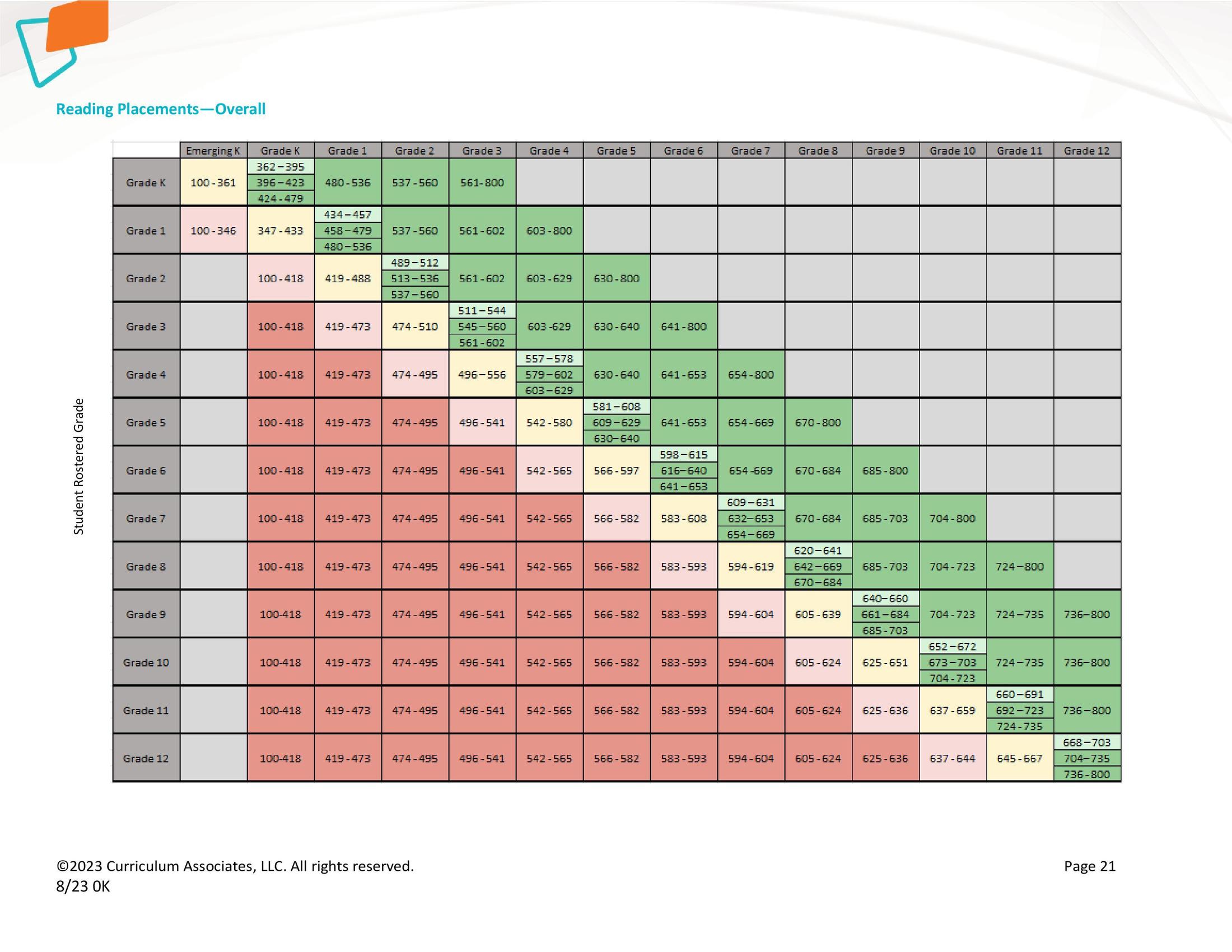Demystifying i-Ready Diagnostic Scores: Understanding Performance and Informing Instruction
The i-Ready Diagnostic is a valuable tool used in K-12 education to assess student reading and math proficiency. It’s designed to be criterion-referenced, meaning it measures a student’s performance against specific learning standards rather than comparing them to other students. However, deciphering i-Ready scores can be perplexing for parents and educators alike. This comprehensive guide explores what constitutes a “good” i-Ready diagnostic score, navigating the intricacies of score interpretation, and utilizing this data to drive effective instruction.
Understanding i-Ready Score Components
The i-Ready Diagnostic generates various scores to provide a multifaceted view of a student’s abilities:
- Scale Scores: Ranging from 100 to 800, these scores indicate a student’s relative performance on the assessment. Higher scores suggest a stronger grasp of the concepts assessed.
- Growth Percentiles: These percentiles indicate how a student’s score compares to their past performance. It shows progress made since previous assessments.
- Learning Objectives: The diagnostic pinpoints specific learning objectives (LOs) where a student demonstrates strength or weakness, offering valuable insights for targeted instruction.
What Makes a “Good” Score?
There’s no single “good” score on the i-Ready Diagnostic. It’s more about understanding the score in context. Here are key factors to consider:
- Individual Growth: A positive score reflects a student’s progress over time. Even a modest score increase can be significant if it demonstrates improvement over previous assessments.
- Grade Level Expectations: i-Ready scores are compared to national norms for each grade level. A score that meets or exceeds these norms suggests the student is on track with their grade-level peers.
- Student’s Learning Goals: The ultimate goal is for each student to achieve their personalized learning objectives. The diagnostic results should inform instruction to help students reach their full potential.
Interpreting Score Reports Effectively
When examining i-Ready score reports, consider these pointers:
- Look Beyond Numbers: While scale scores provide a general performance indicator, delve deeper into the growth percentiles and learning objective mastery details. These offer richer insights into a student’s strengths and weaknesses.
- Consider Student History: Review past i-Ready scores to track a student’s progress trajectory. This historical context helps evaluate growth patterns and areas where the student might need additional support.
- Collaboration is Key: Discuss the scores with teachers and other educators familiar with the student’s learning style and academic background. Their insights can illuminate the score report and guide instructional strategies.
Using Scores to Drive Instruction
i-Ready scores are impactful when used to personalize learning. Here’s how educators can leverage this data:
- Targeted Instruction: Identify learning objectives where students struggle and tailor lessons to address those specific gaps.
- Differentiation: Provide differentiated instruction to cater to varying student needs. Students who excel can be challenged with more complex material, while those needing extra support can receive targeted interventions.
- Monitoring Progress: Regular i-Ready assessments allow educators to monitor student progress throughout the year and adjust instruction accordingly.
FAQ
- Can My Child See Their i-Ready Scores?
Yes, students can access their i-Ready scores, but it’s recommended that parents and educators review them together to facilitate understanding and address any questions.
- How Often Should My Child Take the i-Ready Diagnostic?
The frequency of i-Ready assessments varies depending on the school district or educational institution. Typically, they’re administered at the beginning, middle, and end of the academic year to track progress over time.
- What Are the Limitations of i-Ready Scores?
i-Ready is just one data point. It should be considered alongside other assessments, classroom observations, and teacher feedback to get a well-rounded picture of a student’s abilities.
- What if My Child Scores Low on the i-Ready Diagnostic?
A low score doesn’t signify a lack of potential. It highlights areas where additional support can be beneficial. Collaborate with the teacher to develop a personalized learning plan to address the specific areas of weakness.
- Are High Scores a Guarantee of Academic Success?
While high scores indicate a strong grasp of the assessed concepts, academic success encompasses various factors beyond standardized testing. Non-cognitive skills like perseverance, critical thinking, and collaboration are also crucial for academic achievement.
Conclusion
i-Ready Diagnostic scores are a valuable tool for educators and parents to understand student progress and inform instruction. By moving beyond a simplistic understanding of “good” scores and delving into the nuances of score reports, educators can personalize learning.






More Stories
Where to Watch USMNT vs Jamaica National Football Team
How I Met My Monster
How Should a Ring Fit